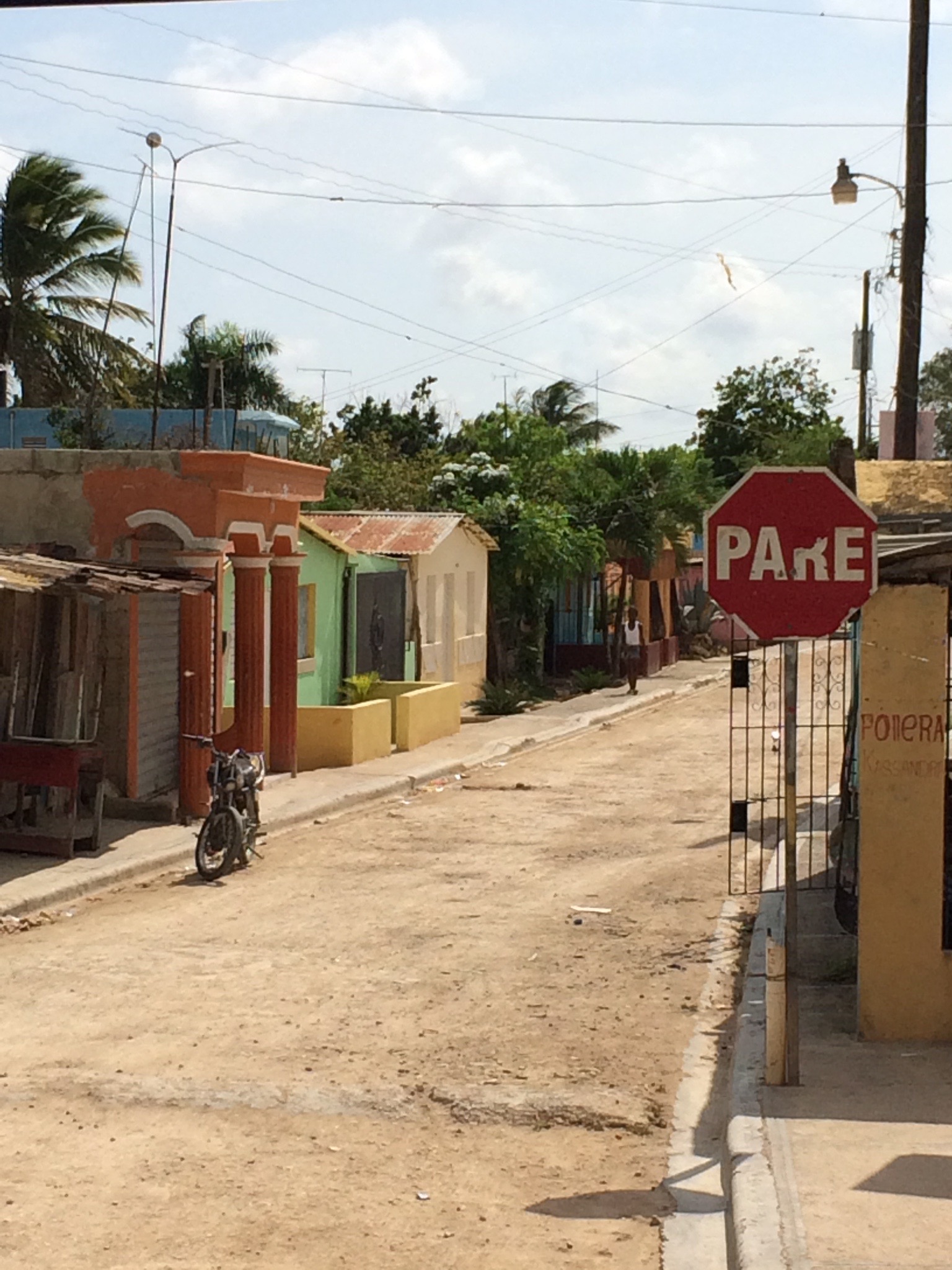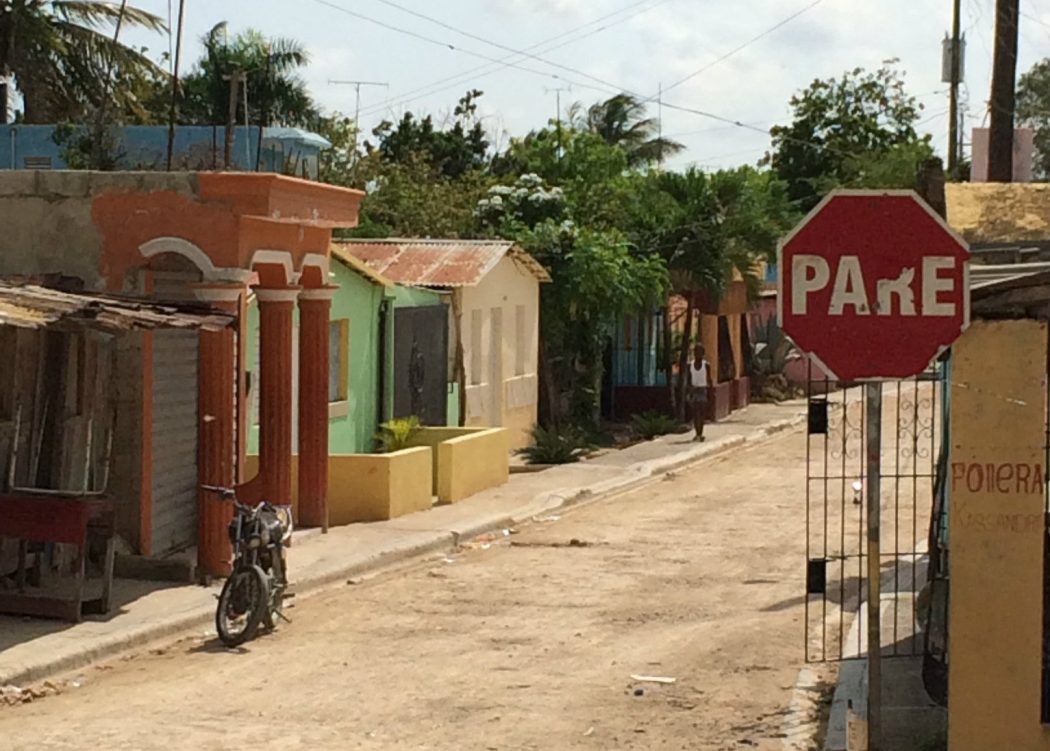 It was the second day of clinic at Batey Aleman, and we were waiting for our next patient. A frail woman turned the corner and knelt on her cane for support as she made her way to our table. Her knees shook violently as she stumbled towards us. As we gathered a history, she explained her daily routine in Spanish: her household work was impossible to do with the frail state her body was in; some days she did not have the strength to move. As she continued to tell her story, tears leaked out the corner of her eyes. My classmate and I were taken aback by her hardship, and we found ourselves wiping our own tears as she continued. I placed my hand on hers and told her how strong she was. We sat in silence, sniffling and appreciating how much this woman endured. We had no medicine to improve her walking, no solution for her to avoid her workload. This was her reality. As I watched her leave, I felt unsettled for not giving her a medicine, a cure for her struggles. But I gave her a chance to tell her story, to receive emotional support when no one else would listen. I battled with the idea of that being enough, when every other patient left the clinic with a bag of medications.
It was the second day of clinic at Batey Aleman, and we were waiting for our next patient. A frail woman turned the corner and knelt on her cane for support as she made her way to our table. Her knees shook violently as she stumbled towards us. As we gathered a history, she explained her daily routine in Spanish: her household work was impossible to do with the frail state her body was in; some days she did not have the strength to move. As she continued to tell her story, tears leaked out the corner of her eyes. My classmate and I were taken aback by her hardship, and we found ourselves wiping our own tears as she continued. I placed my hand on hers and told her how strong she was. We sat in silence, sniffling and appreciating how much this woman endured. We had no medicine to improve her walking, no solution for her to avoid her workload. This was her reality. As I watched her leave, I felt unsettled for not giving her a medicine, a cure for her struggles. But I gave her a chance to tell her story, to receive emotional support when no one else would listen. I battled with the idea of that being enough, when every other patient left the clinic with a bag of medications.
A “cure” in the form of a prescription or bag of pills is a fast solution for a medical ailment. This is applicable in developed and developing countries alike: for example, a patient comes in with a fungal infection, and they are prescribed a course of anti-fungal medication. Done. The patient receives a treatment for an ailment, and the provider is able to diagnose and solve the problem. There is a sense of satisfaction on both sides. This aligns more with the “cure” model of medicine that involves problem solving on the part of the provider, after they have elicited the proper information in a history and physical. In recent medical education, more emphasis has been placed on patient-centered interviewing to reach more informative diagnoses. This idea of patient-centered interviewing allows for emotion-seeking questions and for “care” to be given throughout a medical consultation. This “care” model of medicine gives equal emphasis to the thoughts, feelings and values of the doctor and patient during a clinical encounter [1]. Can this be applied in a global setting as well?
Peter Singer argues the principle of beneficence in a global health setting, saying that the developed world is obligated to help less developed areas based on a disparity of resources [2]. The plenty must help those suffering from lack of medical treatment. Those who travel abroad to global health clinics come prepared to give medications to the masses that come by their clinic stations. They are mentally prepared to act on this principle of beneficence by delivering a concrete solution to those who have less access to medical resources. As a recent participant in a global health clinic, I too was ready to take a history, perform a physical, orally present, and prescribe medications. The idea of delivering “care” did not cross my mind, despite learning about emotion-seeking behaviors in my first-year Doctoring course. Can the idea of beneficence expand to care of a person and not just medical treatments in a global setting? If this is the case, it can be argued that not only is there a disparity of medical treatment in developing countries but care of persons as well. For those who cannot be cured, or who suffer from chronic illnesses, “care” may be the only thing that can be offered at a mobile clinic. For patients who take extraordinary lengths to come to a clinic, there is often an expectation of being given a pill to take away their pain. Some patients wait for hours to be seen by physicians at these mobile clinics. If a patient has a worsening case of diabetes, no pill can be swallowed to cure their condition. Physicians may often give ibuprofen or acetaminophen to satisfy these patients, to make them feel as if they have done the motions of “curing.” But, is this done to help the patient, or give a curative role to the physician?
We cannot always cure, but we can always care and take time to listen. In global medicine, there are language barriers and cultural differences, but care can be given. The way care is displayed may not be universal, but listening is always possible. My experience this summer showed me that being human could trump medicine in a global setting.
- De Valck, C., Bensing, J., Bruynooghe, R., & Batenburg, V. (2001). Cure-oriented versus care-oriented attitudes in medicine. Patient Education and Counseling, 45(2), 119–126. http://doi.org/10.1016/S0738-3991(00)00201-9
- Benatar, S. (2011). Global health and global health ethics. Cambridge: Cambridge University Press.
Nura Sobhanian is a medical student at The University of Arizona College of Medicine – Phoenix, Class of 2018. She is originally from San Clemente, California, and is currently interested in pursuing a career in OB/Gyn. She likes to rock a pair of Rainbow sandals in her free time, and you can find her with a book at any local coffee shop in metro Phoenix.

